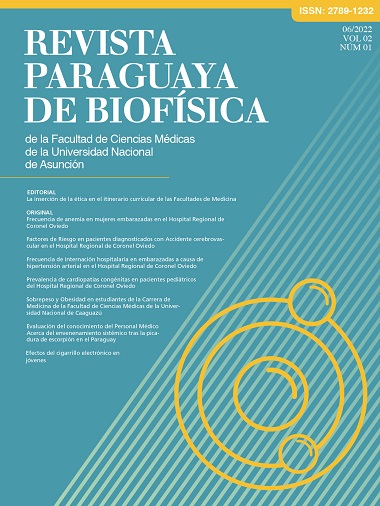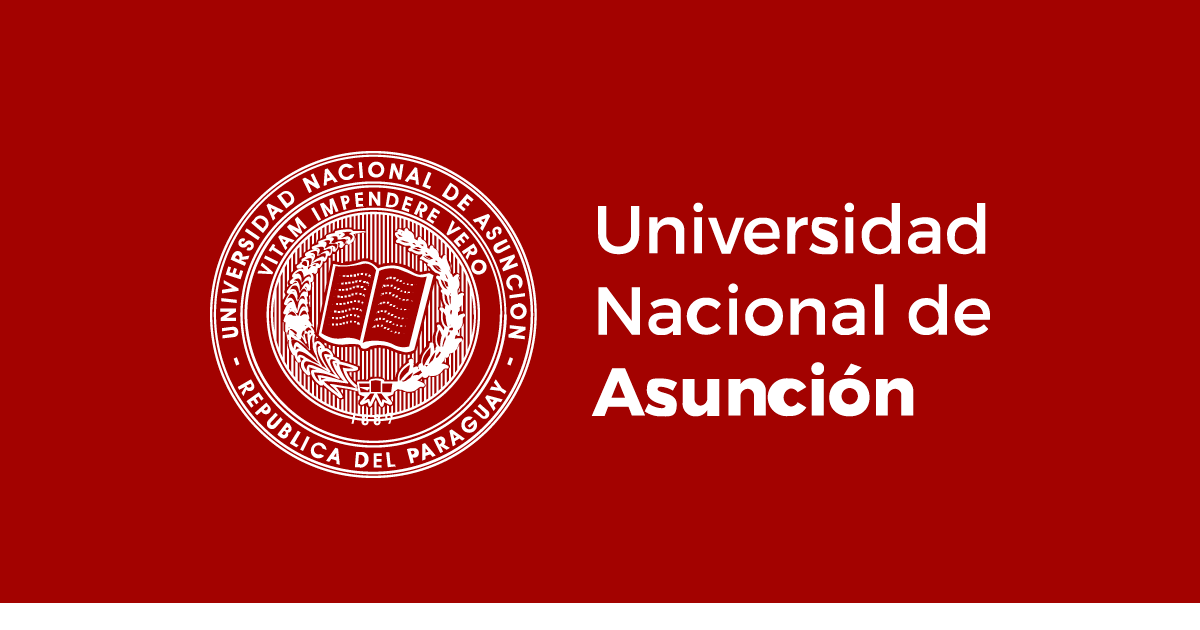Evaluation of the knowledge of medical personnel about systemic poiso ning after scorpion stings in Paraguay
Keywords:
Scorpions, Tytyus, Poisoning, ParaguayAbstract
Arachnids are a class of arthropods, within which we can find scorpions. In Paraguay there are a total of 15 species of scorpions in which the genus Tityus is described as one of the main ones. Scorpions are poisonous animals and known to produce substances that are toxic to humans after the sting, however most scorpionism accidents are not lethal, in some cases they cause local pain and only a burning sensation, but there may also be cases in which systemic poisoning occurs. The aim of this study is to determine, by means of a survey, the knowledge of medical personnel about scorpion sting poisoning in Paraguay, and also to determine how many doctors con- fuse this poisoning with other types of stings and/or anaphylaxis, thus using an inadequate prophylaxis that deviates a favorable evolution in its treatment, compromising their health even more.
Downloads
References
(1) Borges A, Rojas de Arias A. El Accidente por Escorpiones Tóxicos en el Paraguay: Mito y Realidad en el contexto de la Emergencia por Escorpionismo en el Sudeste de la América del Sur. Rev la Soc Científica del Paraguay. 2019;24(1):27-35.
(2) Granja BVM, Martínez ZR, Chico AP. Epidemiología y cuadro clínico del alacranismo. Alerg Asma Inmunol Pediatr. 1999;8(5):135-138.
(3) Petricevich VL. Scorpion venom and the inflammatory response. Mediators Inflamm. 2010;2010:16. doi:10.1155/2010/903295
(4) SR Naseem, S Altamemi, I Ullah. Department of Child Health, Sultan Qaboos University Hopsital, Muscat O. Scorpion sting envenomation or anaphylaxis? report of a child with overlapping clinical picture following scorpion sting. Clin Intensive Care. 1999;10(4):146- 146.
(5) Cardona, Victòria. (2016). GALAXIA 2016. 10.18176/944681-8-6
(6) Khattabi A, Soulaymani-Bencheikh R, Achour S, Salmi LR. Classification of clinical consequences of scorpion stings: Consensus development. Trans R Soc Trop Med Hyg. 2011;105(7):364-369.
(7) Hass A, Orduna T, Lloveras S, Roodt A, Costa V, García S. Guía de Prevención, Diagnóstico, Tratamiento y Vigilancia Epidemiológica Del Envenenamiento Por Escorpiones.; 2011. Pag. 13-18
(8) Feola A, Perrone MA, Piscopo A, Casella F, Della Pietra B, Di Mizio G. Autopsy Findings in Case of Fatal Scorpion Sting: A Systematic Review of the Literature. Healthcare. 2020;8(3):325.
(9) de Roodt, Adolfo Rafael, Veneno de escorpiones (alacranes) y envenenamiento. ActaBioquímica Clínica Latinoamericana. 2015;49(1):55-71
(10) Celis A, Gaxiola-Robles R, Sevilla-Godínez E, Orozco Valerio MJ, Armas J. Tendencia de la mortalidad por picaduras de alacrán en México, 1979-2003. Rev Panam Salud Publica. 2007;21(6):373–80.
Downloads
Published
How to Cite
Issue
Section
License
Copyright (c) 2023 Víctor Jesús Rojas Rojas, Eustacio Adrián Cáceres Rojas, Christians Sebastián Olmedo Giménez, Leonardo Amín Melo Martínez, Mathias Miguel Medina Godoy, Enrique Alejandro Aguilera López, María Eugenia Acosta de Hetter, Laura Silvana Aria Zaya

This work is licensed under a Creative Commons Attribution 4.0 International License.





